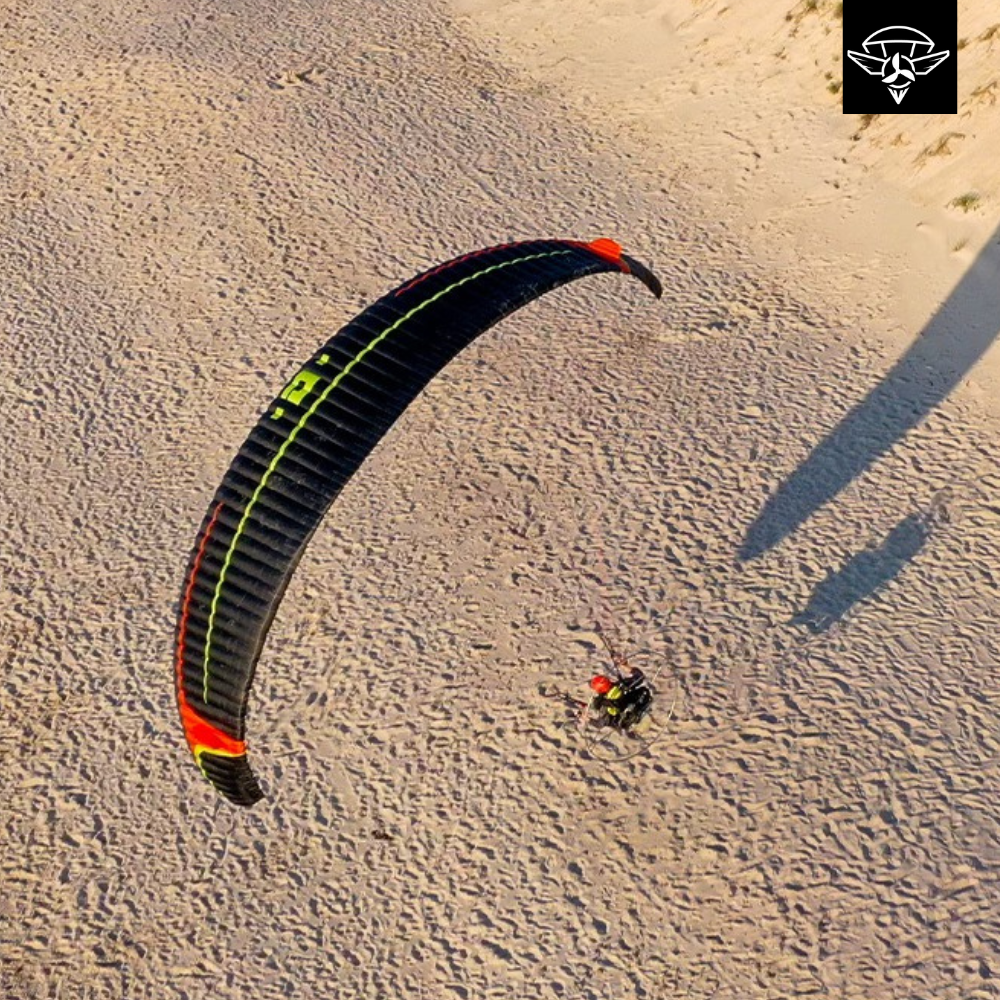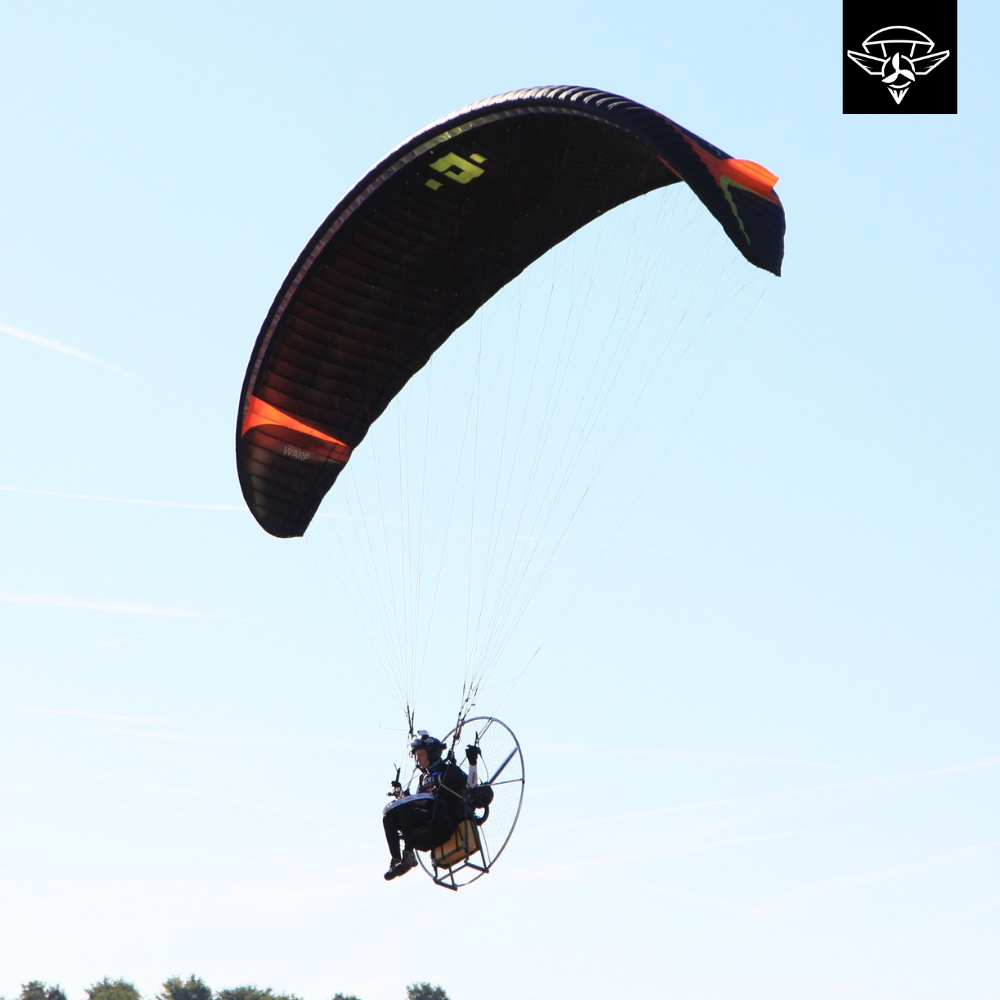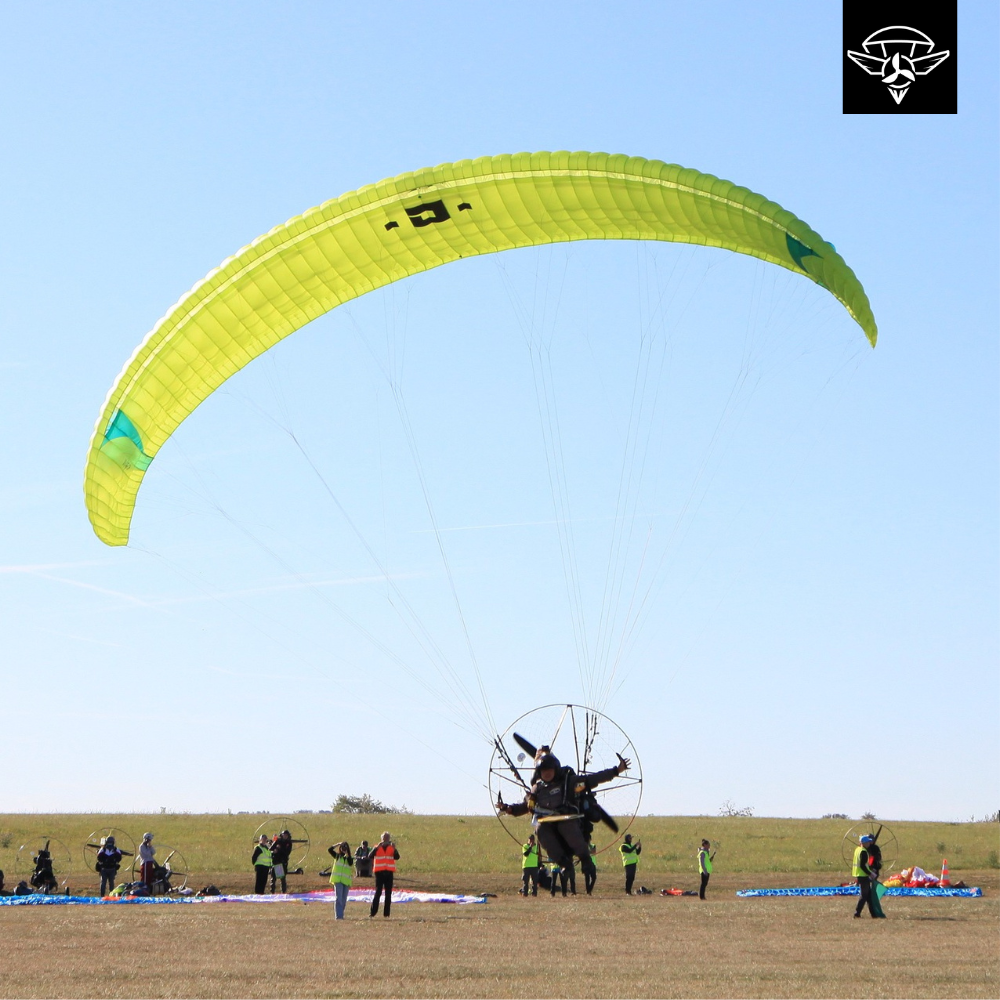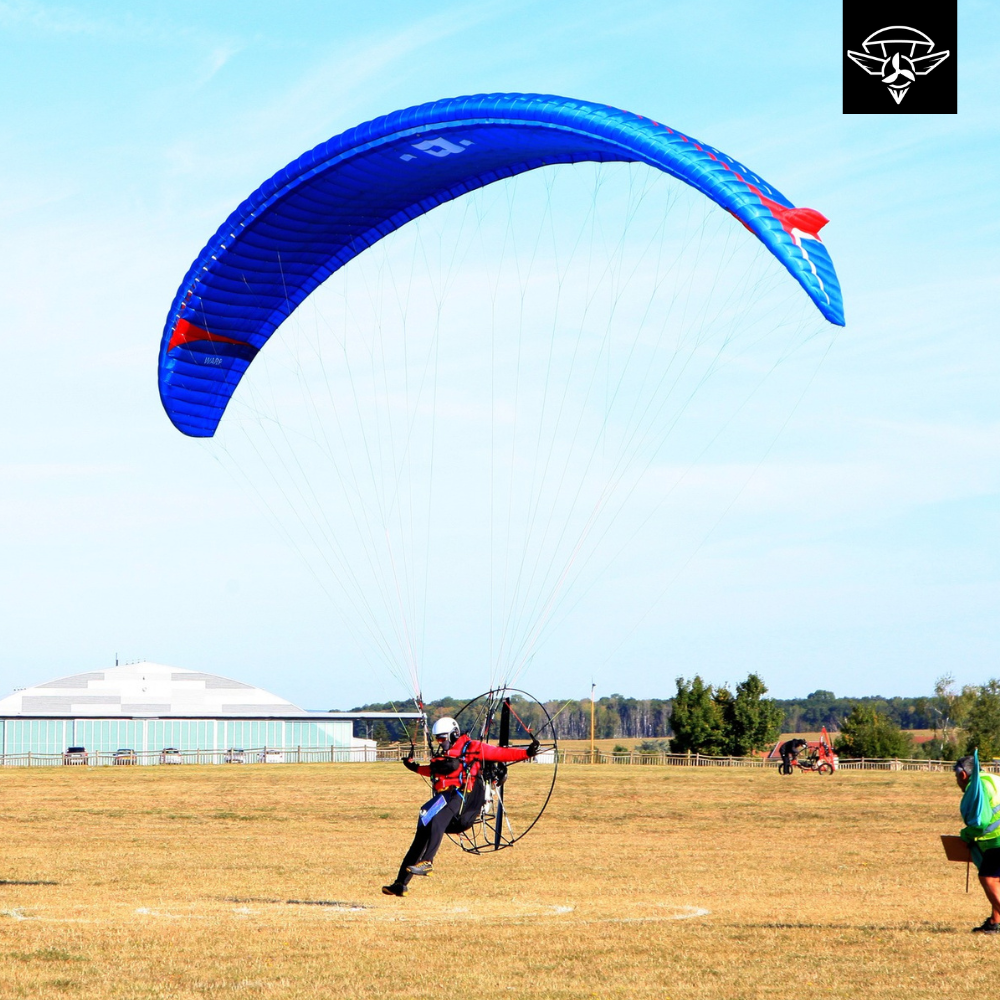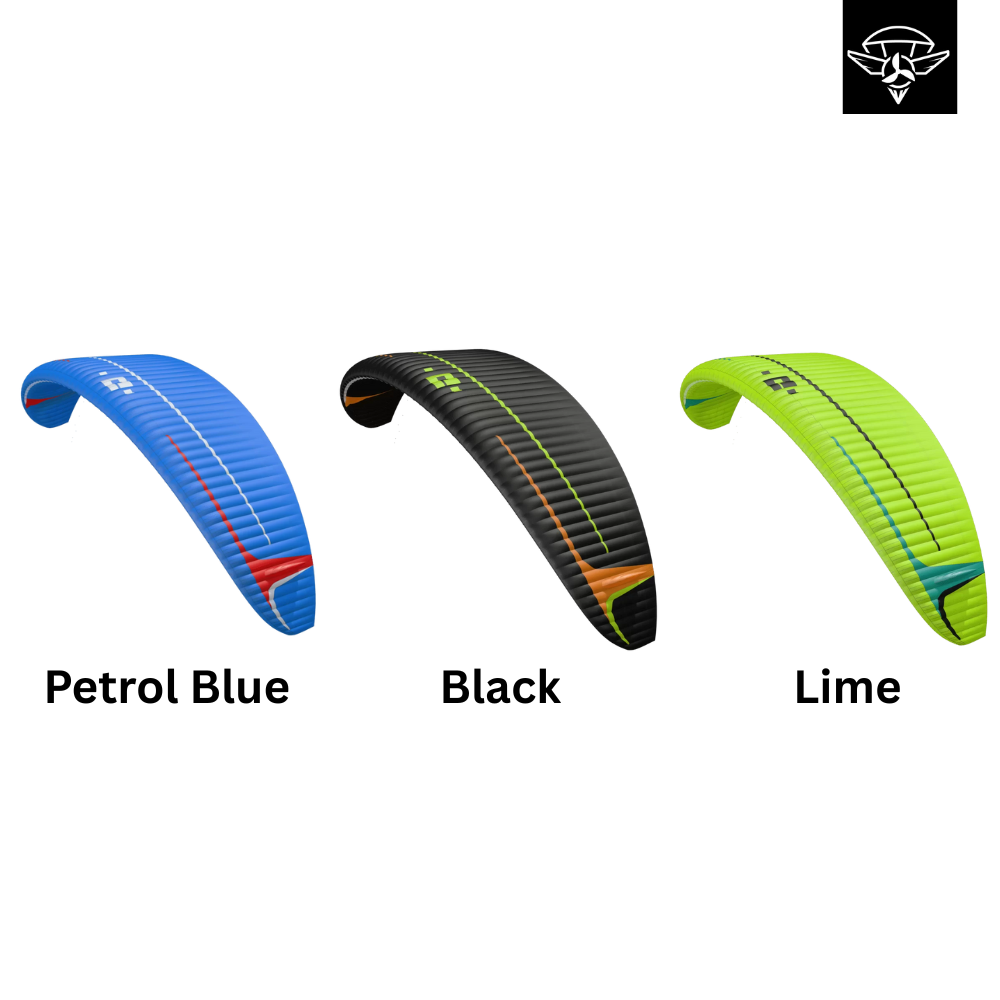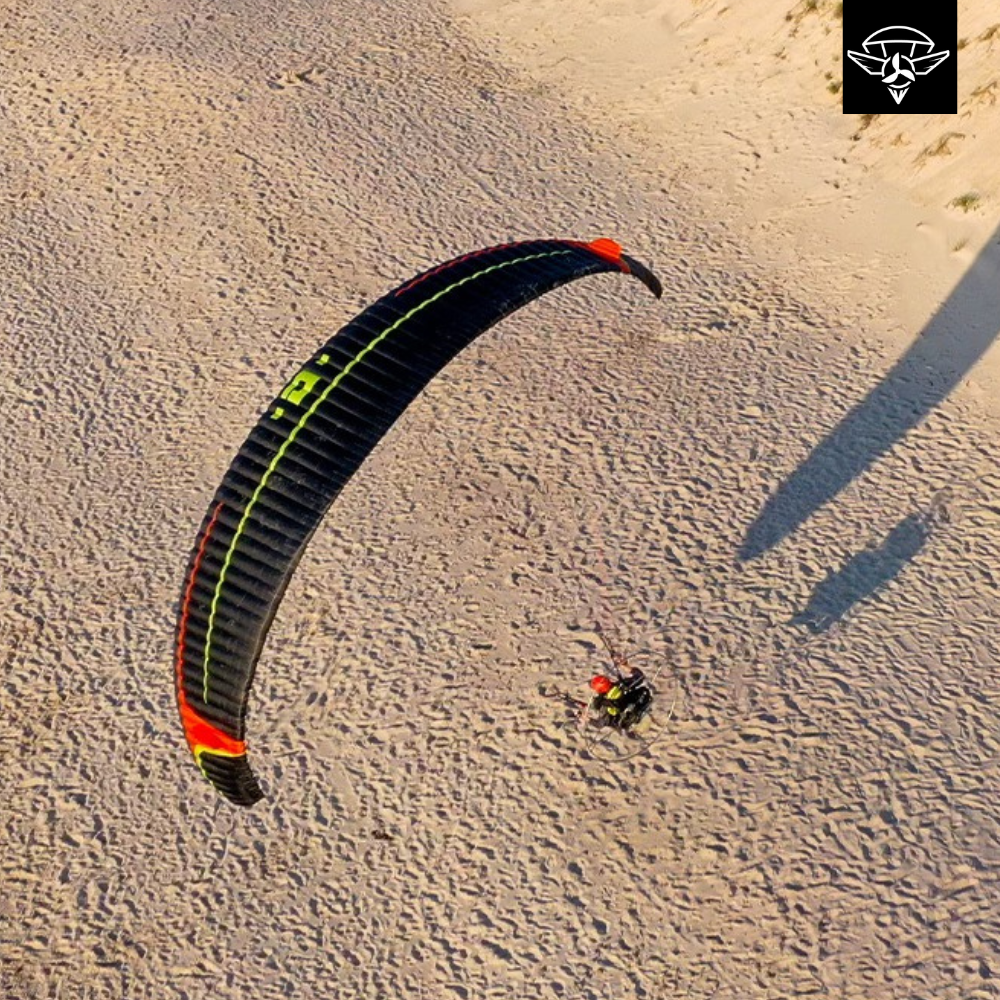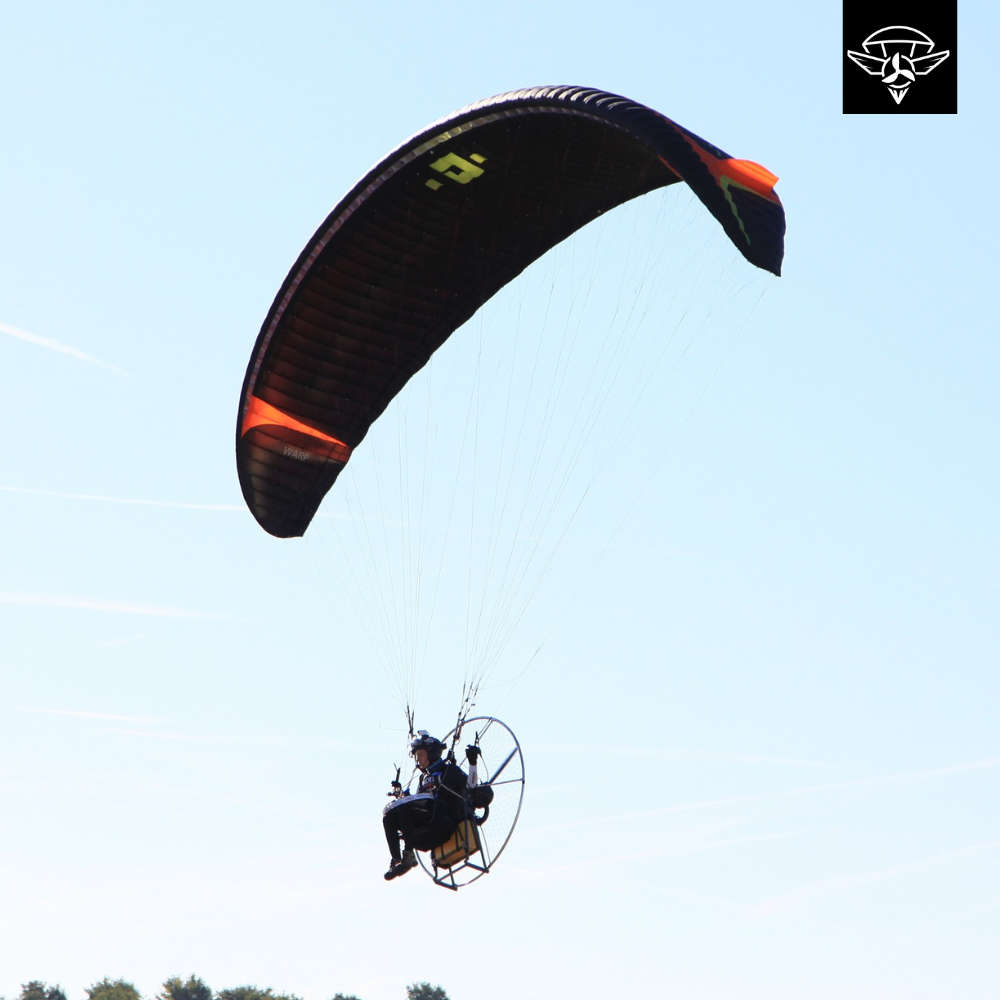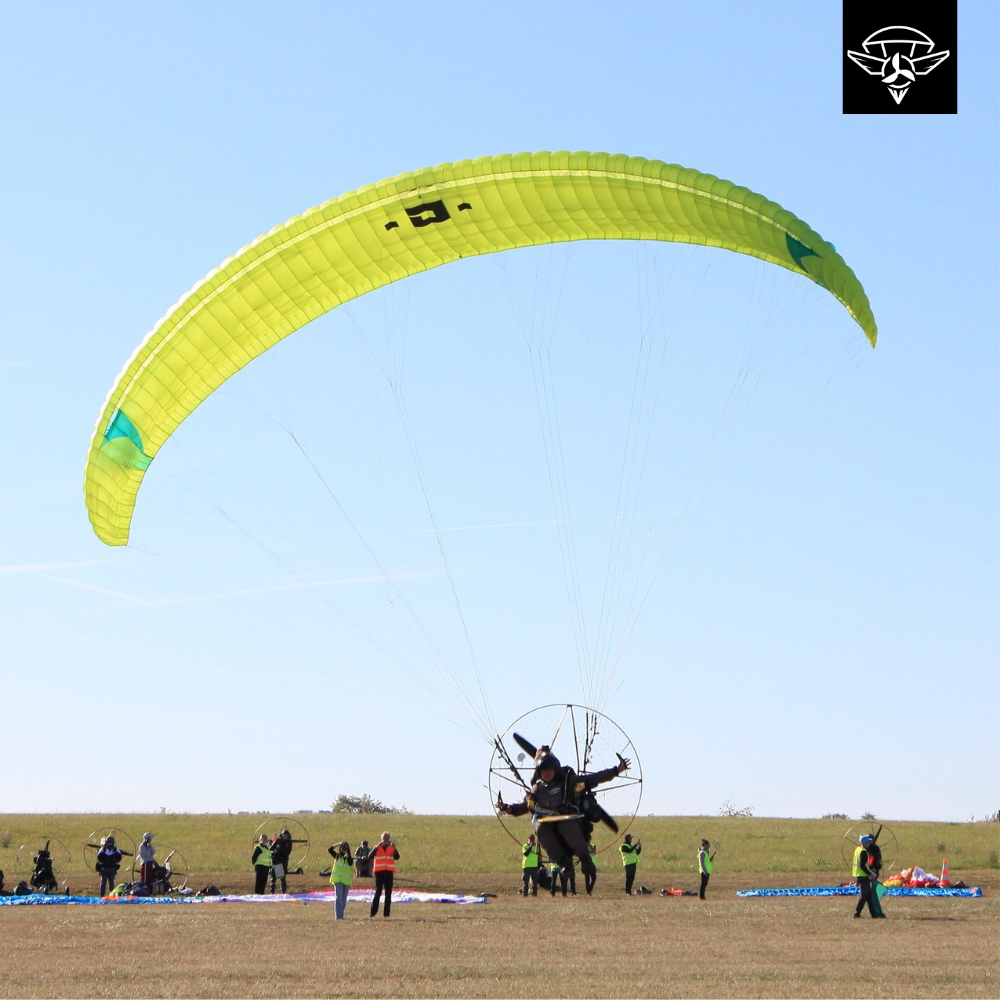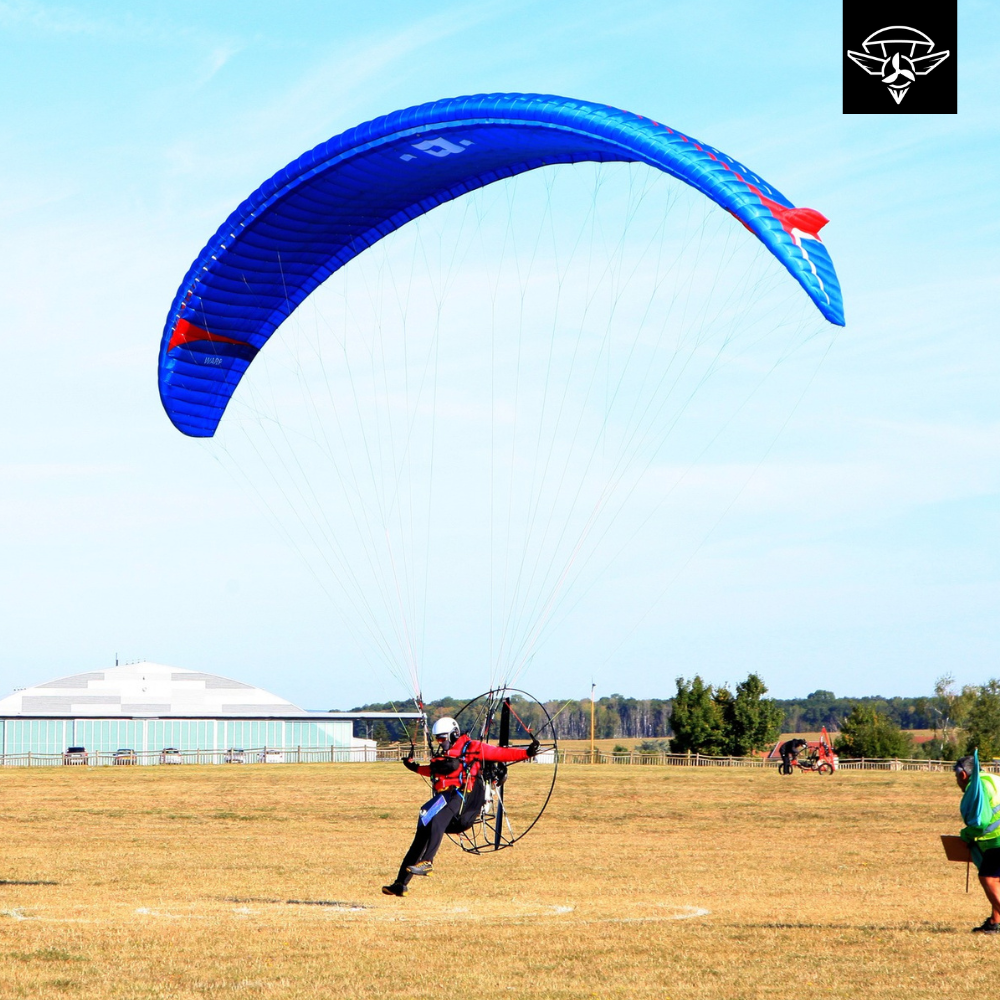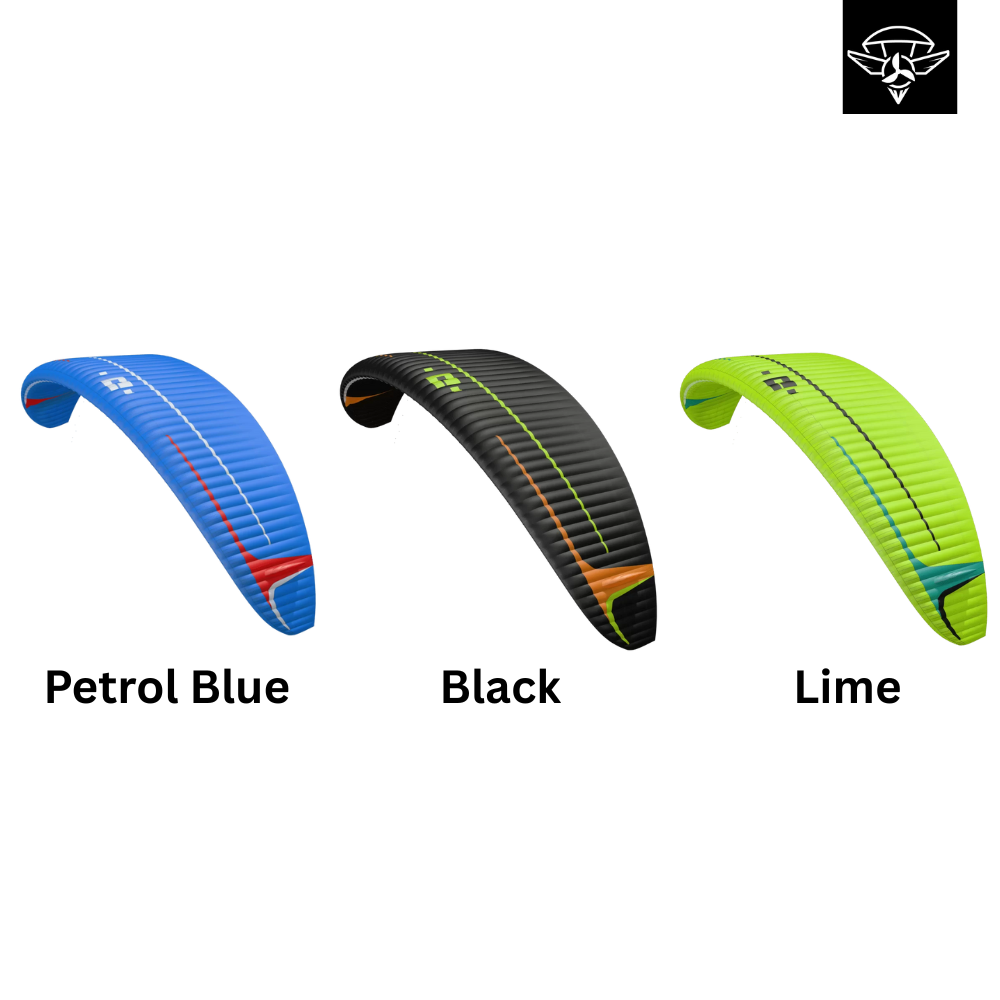Backcountry PPG
Dudek Warp 3
Dudek Warp 3
Couldn't load pickup availability
The Warp 3 is a high-performance cross country wing aimed at pilots who expect the highest performance on the market.
Warp 3 was initially designed to be optimized for classic competitions, but over time it proved to be even more suitable for everyday use than its predecessor. Thanks to the extensive work put into its development, we achieved numerous improvements, such as:
- Significantly expanded speed range
(approx. 6 km/h slower at trim speed) - Incereased efficiency
- Increased comfort in turbulence
- Reduced brake pressure and better handling
- Improved roll stability and autostabilization
- Easier takeoffs
These improvements were achieve by:
- a new airfoil
- reduction of the profile modification
- attachment points modification
- new outline
- modified arc
- new sail tensioning solutions
- use of unsheated lines and lighter fabrics
- winglets
The risers have also undergone significant changes.
Their design is based on the narrow, 15mm-wide riser used in the Snake 4. A new type of Rollercam trimmer buckle has also been incorporated, improving comfort and reducing wear on the trimmer risers.
——-
Warp 3 is recommended for pilots experienced in flying Hadron 3-class wings or more demanding ones. Warp 3 will meet all the needs of demanding PPG pilots who enjoy long-distance flights or those for whom flight economy is a priority.
More construction details
- Shark-nose (SN) on the leading edge takes care of better aerodynamics of this part of the canopy, as well as higher inner pressure at wide range of the attack angles (meaning airspeed).
- The leading edge is stiffened with synthetic rods of the FET (Flexi Edge Technology), distinctly improving launch quality and guarding against collapses at high speeds.
- In addition Leading Edge 3D system enables a better real representation of the aerodynamic profile and reduces the amount of wrinkles on the fabric in the most important place in terms of lift and air resistance.
- The design features also other effective methods of canopy loads distribution, mediated by most modern sewing technologies.
- Three rows of suspension lines are joined at the risers, equipped with compact yet very efficient tools like trimmers, speed and Power Attack (PA) system.
- As per our standard, the risers are equipped with three optional positions for the steering pulleys and magnets to choose from. Thanks to all these features, steering operation is straightforward and intuitive.
- Obviously, in some paramotor/canopy configurations considerable amount of torque can appear. To counter this, there is proven in our Warp an automatic TEA system (Torque Effect Adjuster). It works on its own after placing the line on proper side, depending on the torque direction.
- Due to the small number of lines, they were carefully selected to obtain the lowest possible air resistance, while ensuring high strength and resistance to stretching. The upper layer lines, attached to the wing’s suspension points are unsheathed, in the lower layers we use regular sheathed lines.
Warp 3 is manufactured entirely in Europe, at our Polish plant, so that we have total control over its sophisticated production process (using among else the advanced LT (Laser Technology) cutting.
Technical details
| Warp 3 – Sizes | 16 |
17 | 18 | 20 | 22 |
| Approval – ULM (DGAC) | |||||
| Number of cells | 62 | ||||
| Surface area (flat) [m2] | 16 | 17 | 18 | 20 | 22 |
| Surface area (projected) [m2] | 13.62 | 14.47 | 15.32 | 17.02 | 18.72 |
| Span (flat) [m] | 9.66 | 9.95 | 10.24 | 10.80 | 11.32 |
| Span (projected) [m] | 7.71 | 7.95 | 8.18 | 8.62 | 9.04 |
| Aspect Ratio (flat) | 5.90 | ||||
| Aspect Ratio (projected) | 4.36 | ||||
| Distance pilot to wing [m] | 5.63 | 5.81 | 5.98 | 6.30 | 6.60 |
| Total line length [m] | 212.4 | 219.3 | 225.9 | 238.84 | 251.09 |
| Total take-off weight* [kg] | 80-130 | 85-135 | 90-140 | 100-150 | 110-160 |
| Distance between risers [cm] | 45 | ||||
| Weight [kg] | 3.66 | 3.78 | 3.83 | 3.95 | 4.05 |
| Lines | 2 80001: 050; 070; 090; 130; 190 / Technora: 140 & 190 & 280 / Dyneema: 350 | ||||
| Fabric | Dominico tex 41 g/m2; Dominico tex 33 g/m2; Dominico tex 27 g/m2; Dominico tex Hard 41 g/m2; SR Scrim, SR Laminate 180 g/m2 | ||||
* The basic rule is to choose the wing size so the take-off weight is in the middle of the weight range. Less weight on the wing (lower range take-off weight) can be considered for foot take-off, when flying in calmer conditions, or when we want to improve economy. More experienced pilots who want to fly dynamically, have higher speed and fly in more demanding wind conditions can consider greater wing loading (take-off weight in the upper range). This is a common option among trike users.
Note – the canopy significantly changes its behaviour with increasing wing loading. The greater the loads, the greater skill and concentration of the pilot are required.
